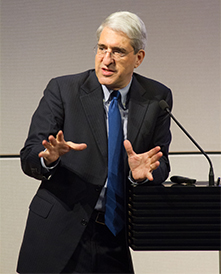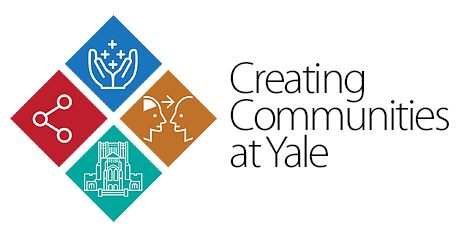Letter From Our AYA Rep
(Below is a letter from our Class representative to the AYA, Dr. Harold Mancusi-Ungaro.)
Dear Classmate,
I had the honor and pleasure of representing the Class of 1969 as your delegate to the AYA Assembly on November 16 & 17. Incidentally, I also represent the School of Medicine as the President of the Association of Yale Alumni in Medicine, 2017-2019. Either way, it afforded me the opportunity to watch Yale beat Harvard again and to clinch the first unshared Ivy League Championship since 1980.
I also had the chance to get together with Ken Brown, our Secretary.
So, what did I learn that you should know? The theme of the Assembly was “Creating Communities at Yale.” In the past, there was a theme of “One Yale” which focussed on the cross pollination from one school to another, as well as one department to another. This time we heard about how several of the schools have their own communities. These communities strive to bring students together around a common interest, e.g., music, science, innovation, service, athletics, etc. One might say that these communities resemble the shared interest groups or SIG’s found in the AYA.
“I was surprised to learn that 40% of seniors now live off campus.”
– Harold Mancusi-Ungaro
Class of 1969 AYA Representative
Several alumni expressed concerns about the evolution of campus life. Many students now live off campus. The exodus began in past years because the demand for accommo-dations exceeded the capacity of the residential colleges. The two new colleges remedy, in part, the situation. Yet, 40% of seniors now live off campus.
Other factors have also influenced the move off-campus. Students have complained about the meal plan and the hours of service. They can eat when they want, what they want, often for less money, in their own apartments.
With Yale carefully observing Connecticut’s 21-year-old age requirement, another big factor is the availability of alcohol off campus.
As for “creating community,” the new colleges afforded some students a rare opportunity to collect friends from other colleges and migrate as a group into a new college and a new affiliation. At the same time, one could infer that these groups of friends will form their own separate communities within the college. Personally, let me editorialize: Is community a euphemism for “silo?”

At a Q&A, President Salovey was asked to address the move off campus. He appeared sensitive to the issue. The University is considering accommodating the students with changes in the dining plan and/or expanding the Durfee options. At the same time, he pointed out that New Haven’s face has changed. It is safer, cleaner, and there are new apartments, making the off-campus option desirable. That said, the underlying issue would seem to me to be the absence of alcohol on campus. Indeed, the graduate school has developed increased camaraderie with a program called (something like) “5 at 5.” Every fifth Friday, they have a kegger. (Graduate students are over 21.)
I came away with a positive view of the University, its courses and leadership. President Salovey is pushing in all directions to make Yale the leader, whether it be in science, technology, medicine, the arts, or, yes, sports.
The rise of the football team among others is not an accident. I loved being able to cheer the winning team along with some 55,000 others filling the Yale Bowl.
While the president expressed the importance of the scholar athlete, he continues to build on other strengths, too. There are plans for a new theater for drama. The new Tsai CITY (Center for Innovative Thinking at Yale) will be a building, faculty, and program to inspire innovation and entrepreneurial efforts thanks to Joseph Tsai, ’86, Law ’90, Executive Vice Chairman and Cofounder of Alibaba. Most of these efforts are the result of alumni involvement and commitment and, of course, money.
Let me stress here alumni involvement and commitment, not the money. Unfortunately, we tend to equate the alumni association(s) with “development”, read “raising money.” As we approach or 50th reunion, I want to emphasize how rewarding it has been to renew interest and involvement with both the AYA and the AYAM. Students frequently look for mentoring or support from contacts outside the faculty. In many ways, it is too bad that reunions occur after graduation day and after the students have left. I encourage you to come back when they are there, perhaps for a football game. Representing the class was the excuse I needed.
Thank you,
Harold

